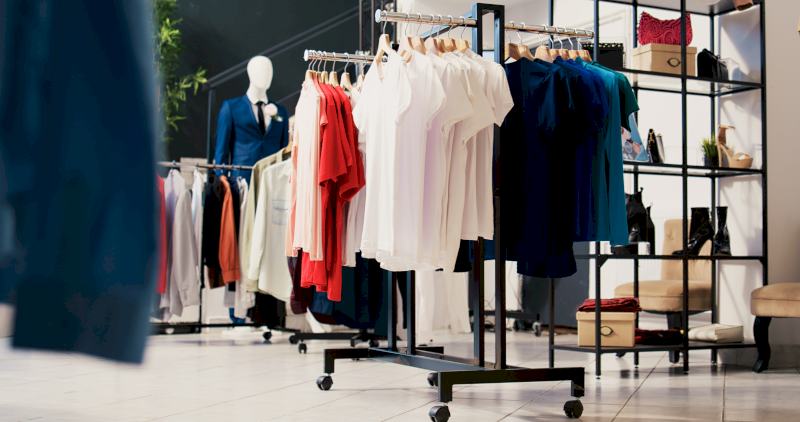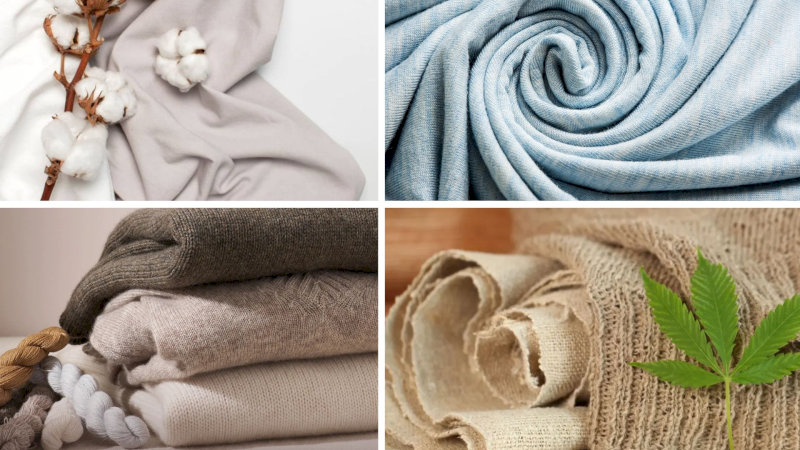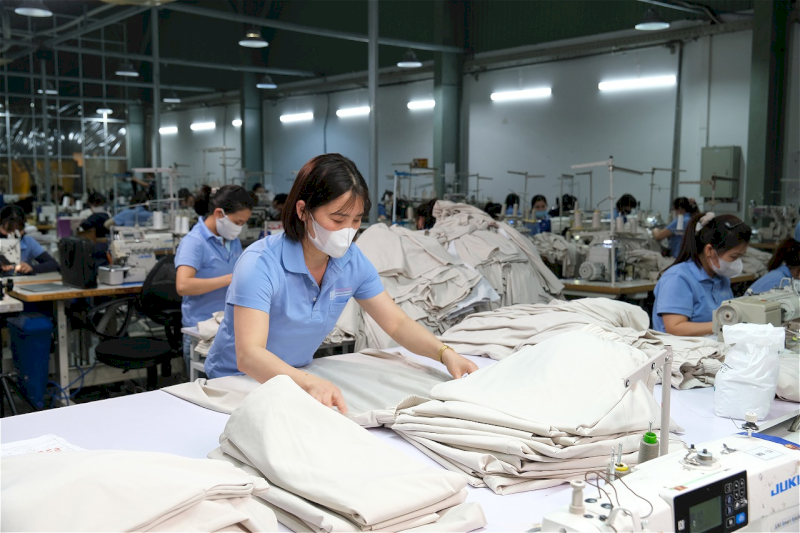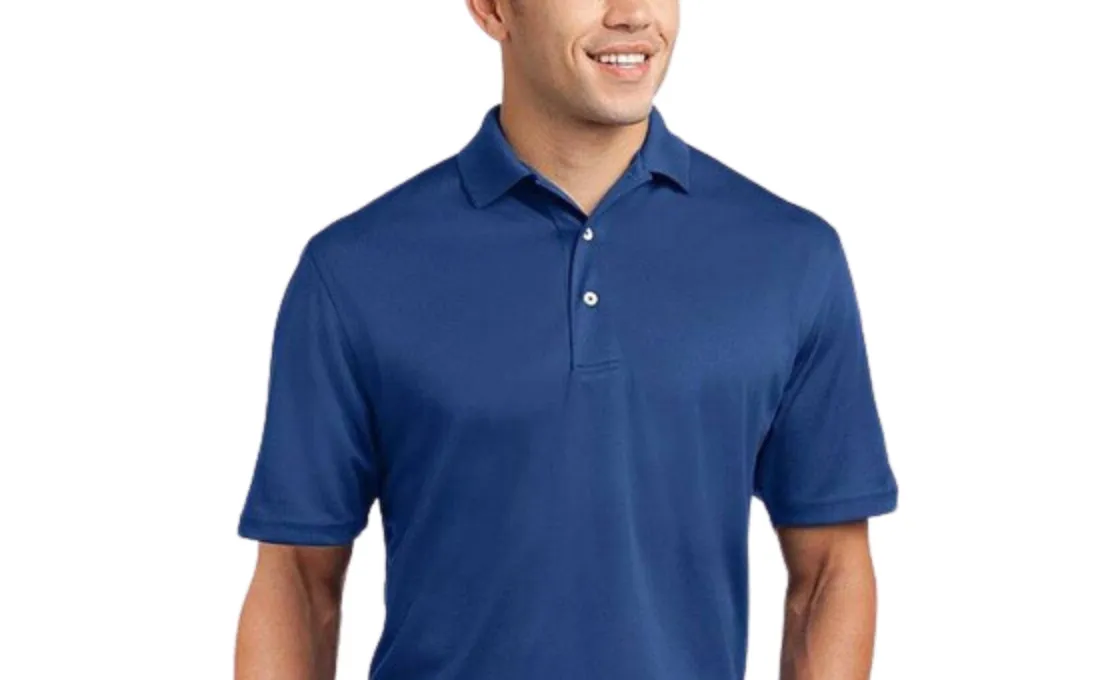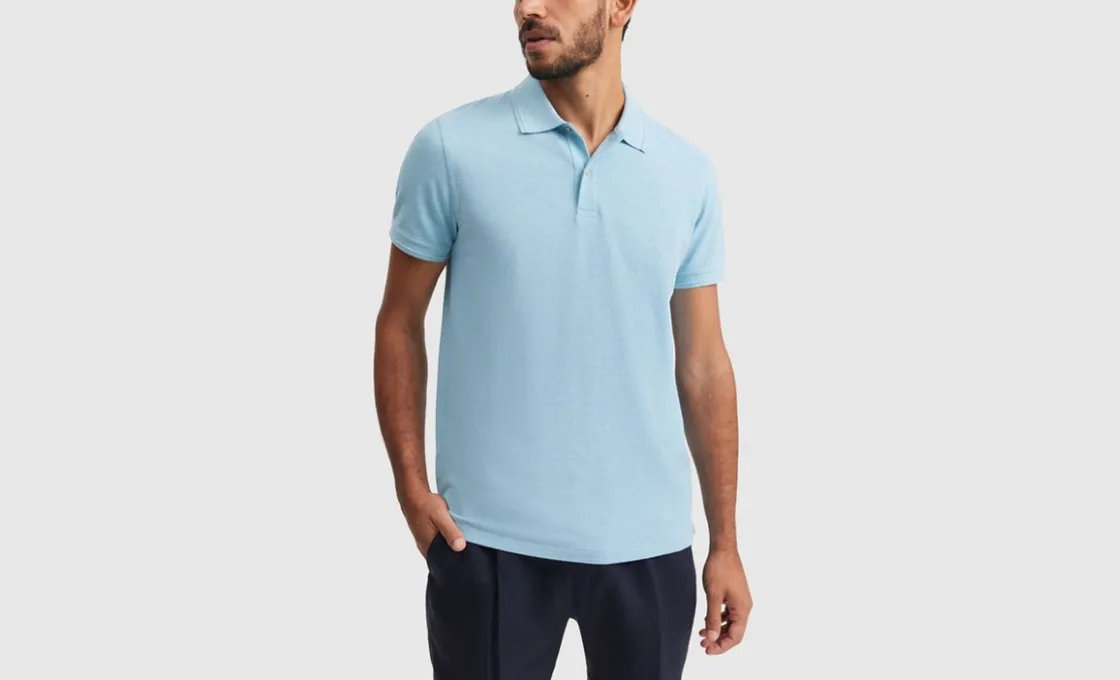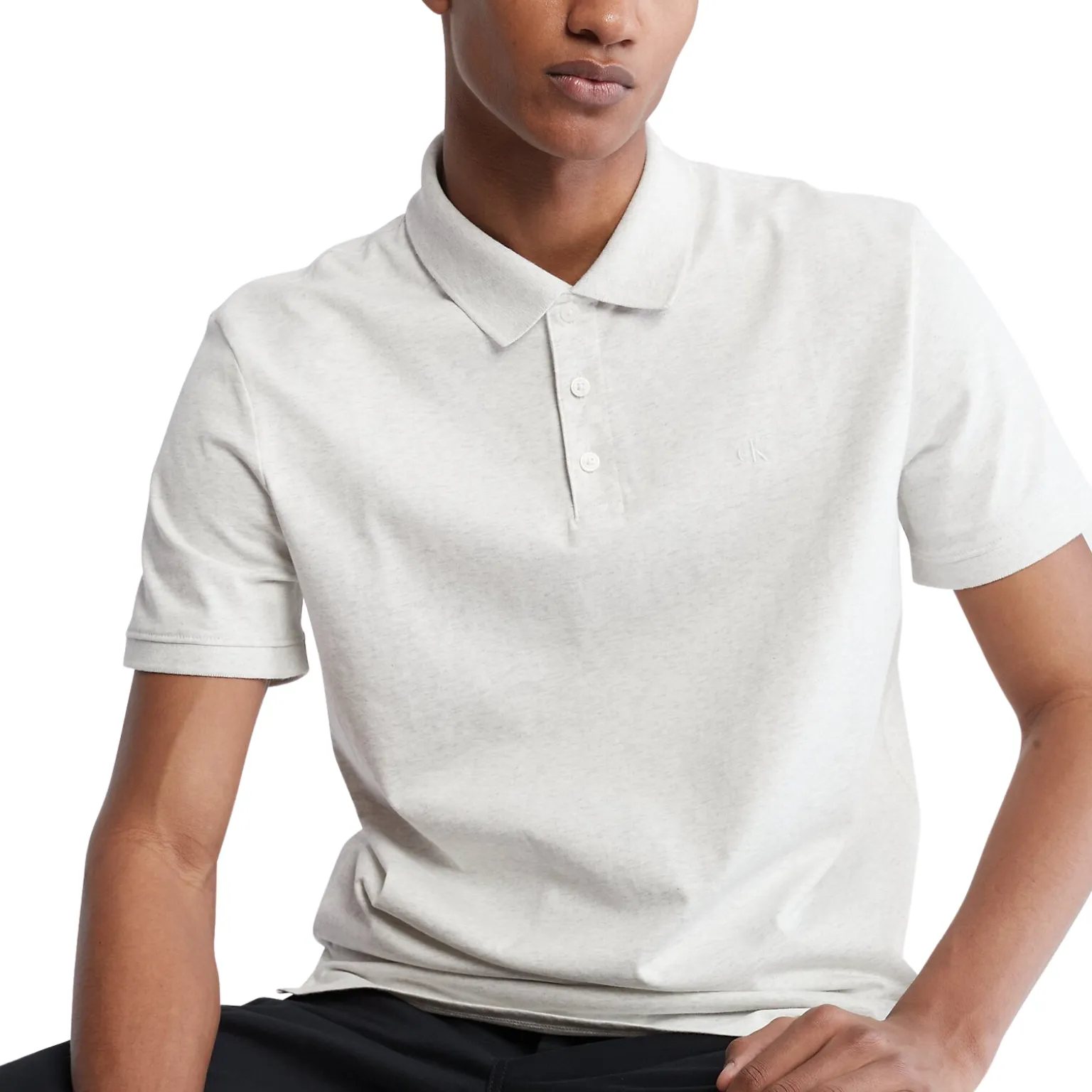Bamboo fabric is a sustainable textile made from bamboo fibers, known for its softness, breathability, and eco-friendly properties. This material is widely used in fashion for producing comfortable, moisture-wicking clothing. So, what is bamboo fabric? Discover more about its benefits and fashion applications in this writing below.
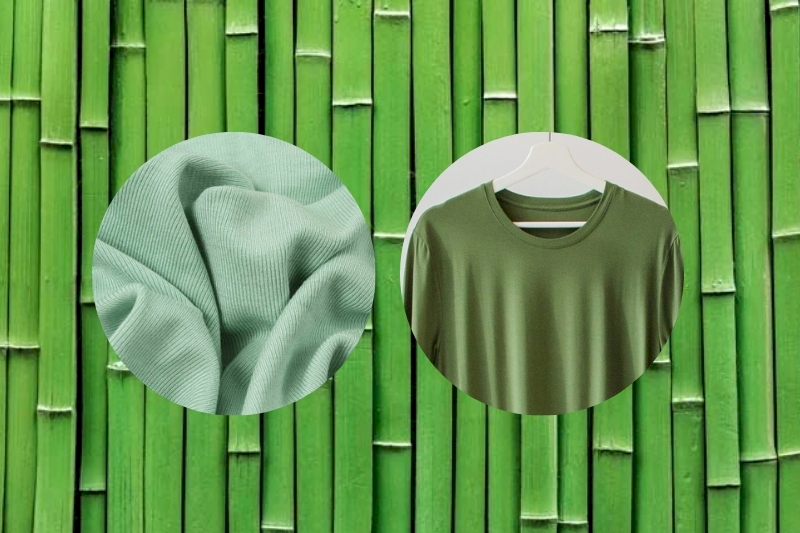
1. What is bamboo fabric made of?
Bamboo fabric is a type of textile made from fibers extracted from the bamboo plant. The process involves breaking down bamboo grass into thin, strong threads, which are then spun and woven into fabric.
The eco-friendliness of bamboo fabric depends on how it is made. Some manufacturers use a natural, enzyme-based process that is better for the environment, but it is more expensive. Others use chemical processing, which is faster and cheaper but can be harmful if not handled properly.
Compared to other kinds of fabric such as cotton, bamboo fabric is softer, more breathable, and naturally antibacterial, making it great for sensitive skin.
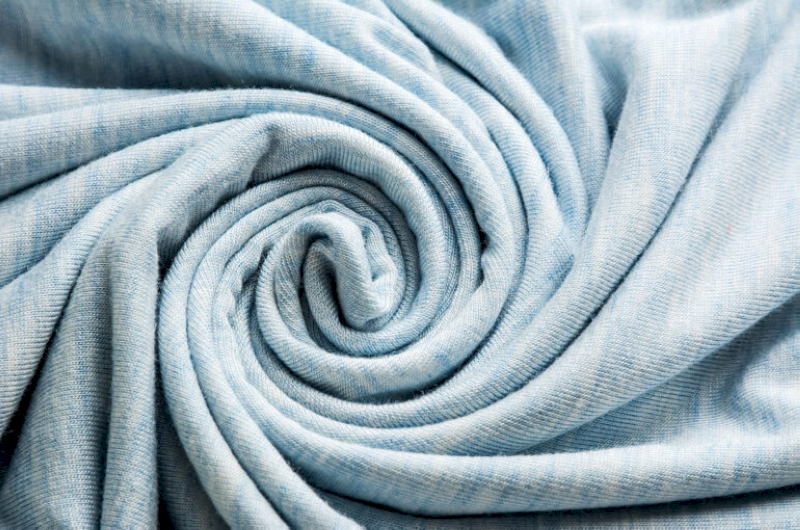
2. Features and benefits of bamboo fabric
Using bamboo fabric in clothing production offers various advantages in terms of comfort, durability, and sustainability. Below is a summary of its key features and the benefits they provide:
| Features | Benefits |
|---|---|
| Soft and smooth texture | Provides a luxurious feel and enhanced comfort |
| Breathable and moisture-wicking | Keeps the body cool and dry, ideal for hot weather |
| Naturally antibacterial | Reduces odors and keeps clothes fresher for longer |
| Hypoallergenic and gentle on skin | Safe for sensitive skin, reducing irritation |
| Biodegradable and eco-friendly | Breaks down naturally, reducing environmental impact |
| Durable and long-lasting | Maintains shape and quality after multiple washes |
For deeper insight into its benefits, explore our detailed guide on the advantages of bamboo fabric to find out more.

3. Popular product lines made of bamboo fabric
What is bamboo fabric used for? Bamboo fabric is widely used in various clothing due to its versatile properties. It is a preferred choice for garment products offering comfort and practicality.
3.1. Underwear
Bamboo fabric is widely used in underwear production due to its exceptional comfort and breathability. It is commonly found in men’s and women’s briefs, boxers, bralettes, camisoles, and undershirts, offering a soft, lightweight feel against the skin. Its moisture-wicking properties help keep the wearer dry, while its hypoallergenic nature makes it a suitable choice for those with sensitive skin.
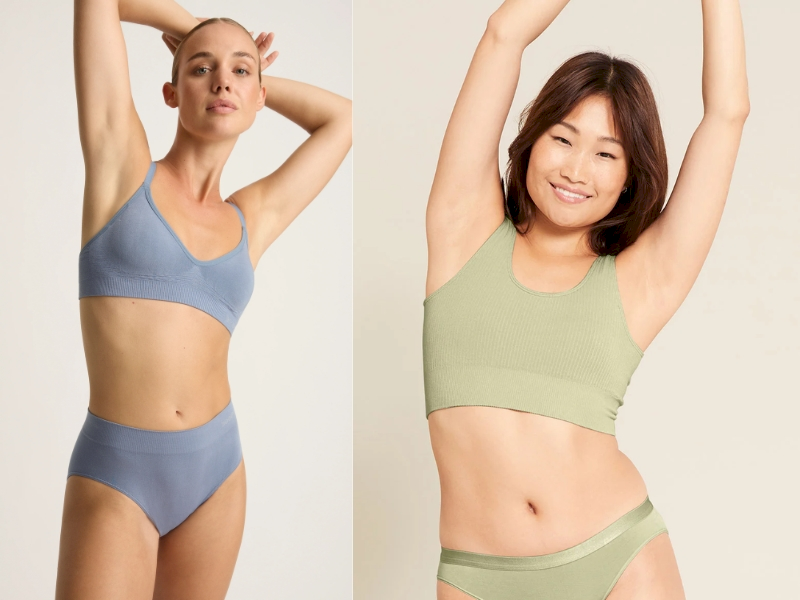
3.2. Activewear
The flexibility and moisture-wicking capabilities of bamboo fabric make it an excellent choice for activewear. Commonly blended with spandex or polyester, it is used in sports bras, leggings, T-shirts, running shorts, and yoga wear. The fabric’s ability to regulate temperature and prevent odor buildup enhances comfort during intense workouts, while its natural UV resistance provides extra protection for outdoor activities.

>> In particular, Thygesen Vietnam is the leading custom activewear manufacturer in the market, you can refer to more information in our article.
3.3. Kidswear
Bamboo fabric is particularly valued in kidswear for its gentle texture and natural antibacterial and hypoallergenic properties. It is often used in baby bodysuits, pajamas, rompers, T-shirts, and leggings, providing a soft and safe option for delicate skin. The fabric’s durability ensures it remains comfortable even after multiple washes. To guarantee safety, OEKO-TEX certified bamboo fabrics are commonly chosen, as they are free from harmful chemicals.
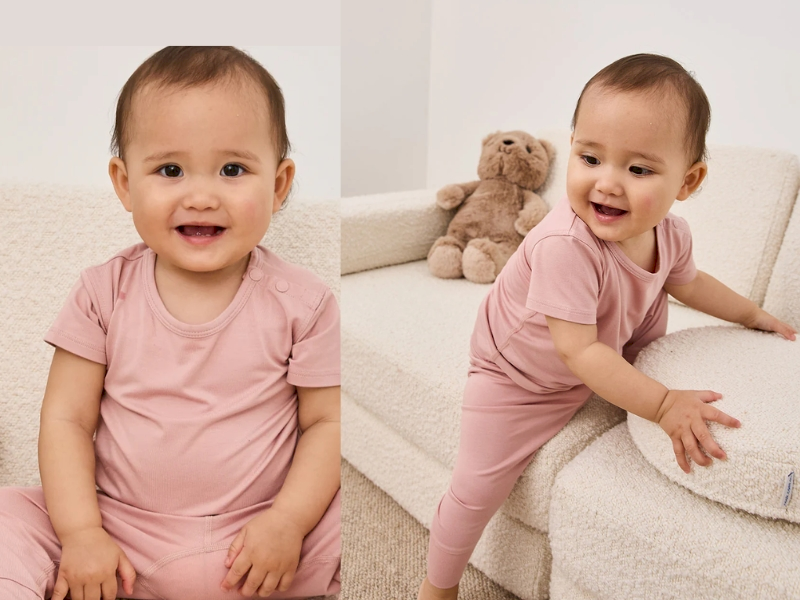
3.4. Casualwear
With its lightweight and breathable feel, bamboo fabric is a preferred material for casualwear, including T-shirts, polo shirts, hoodies, and everyday dresses. It offers a relaxed and stylish appearance while keeping the wearer cool and comfortable throughout the day. The fabric’s durability and resistance to pilling make it a practical choice for daily wear.

>> Thygesen is widely known as one of the best quality hoodie manufacturer in the market. You can refer to the article for more information about our products.
3.5. Sleepwear
Bamboo fabric’s softness and temperature-regulating properties make it ideal for sleepwear. It is commonly used in pajama sets, nightgowns, loungewear, and sleep shirts, ensuring maximum comfort during rest. The fabric’s ability to wick moisture and prevent overheating makes it particularly beneficial for those who experience night sweats or prefer breathable sleepwear.

4. Types of fabrics commonly mixed with bamboo
Bamboo fabric comes in different types, often blended with other materials to enhance its properties and expand its applications in fashion.
4.1. Cotton
- Common Ratios: 60% bamboo – 40% cotton, 70% bamboo – 30% cotton
- Benefits: Increases durability while maintaining bamboo’s softness and breathability. Cotton enhances structure and strength.
- Common Applications: T-shirts, casualwear, baby clothing, and undergarments.
4.2. Polyester
- Common Ratios: 50% bamboo – 50% polyester, 70% bamboo – 30% polyester
- Benefits: Boosts fabric strength, wrinkle resistance, and moisture-wicking capabilities. Polyester improves durability and quick-drying properties.
- Common Applications: Sportswear, activewear, and outdoor apparel.
4.3. Bamboo-Spandex Blend
- Common Ratios: 95% bamboo – 5% spandex, 90% bamboo – 10% spandex
- Benefits: Enhances stretchability and flexibility while retaining bamboo’s softness and breathability.
- Common Applications: Leggings, yoga wear, undergarments, and fitted clothing.
4.4. Modal
- Common Ratios: 50% bamboo – 50% modal, 70% bamboo – 30% modal
- Benefits: Adds extra softness, drape, and silk-like texture while maintaining moisture-wicking properties.
- Common Applications: Luxury loungewear, nightwear, and high-end fashion pieces.
4.5. Tencel
- Common Ratios: 50% bamboo – 50% Tencel, 70% bamboo – 30% Tencel
- Benefits: Enhances smoothness, moisture management, and eco-friendly properties. Tencel improves fabric strength and reduces pilling.
- Common Applications: Premium clothing, dress shirts, and eco-conscious fashion items.

5. How is bamboo fabric made?
The production of bamboo fabric involves several key steps, converting raw bamboo into a usable textile:
Step 1: Harvest bamboo
Bamboo plants are carefully harvested once they reach maturity, usually after three to five years. The stalks are cut into smaller pieces to prepare for fiber extraction.
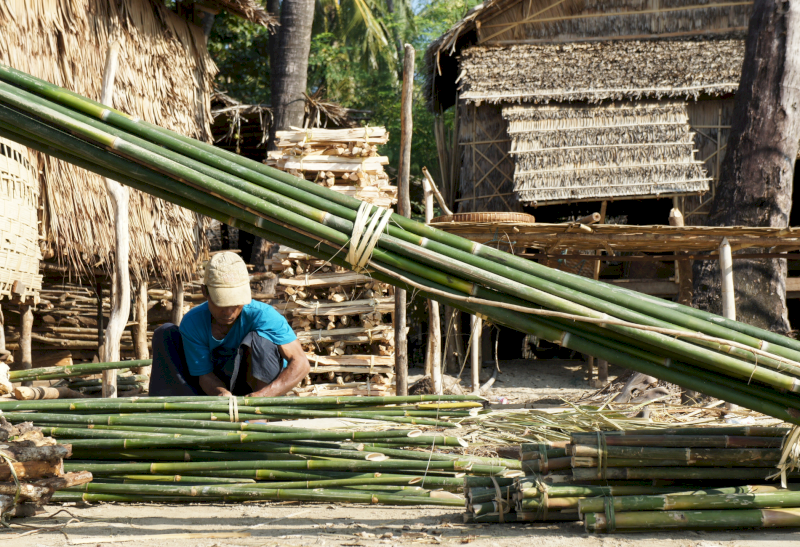
Step 2: Extract fibers
The bamboo pieces are processed to extract fibers using either a mechanical or chemical method. The mechanical process uses natural enzymes to break down the bamboo, producing eco-friendly but costly fibers. The chemical process, commonly used for bamboo viscose, dissolves bamboo pulp in a solution to create a softer.
Step 3: Wash, dry and spin fibers into yarn
- After extraction, the fibers are thoroughly washed to remove any residual substances.
- Then, dry fibers and spun them into yarn. The yarn’s thickness and texture are adjusted depending on the intended fabric type.
Step 4: Weave yarn into fabric
The bamboo yarn is woven or knitted into fabric, with different techniques used to create various textures and finishes. Some fabrics are blended with other fibers like cotton, polyester, or spandex to enhance durability, elasticity, or softness.
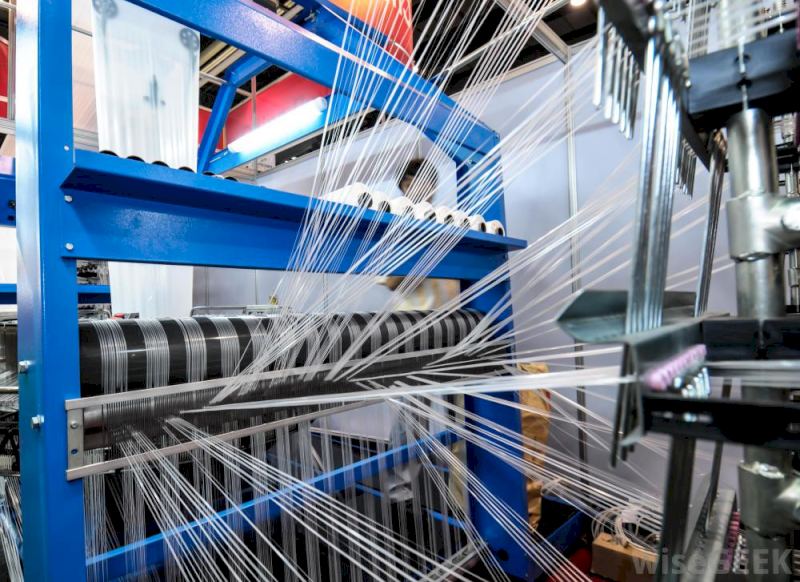
Step 5: Dye and Finish Fabric
The fabric undergoes dyeing and finishing treatments to achieve the desired color, texture, and performance properties such as moisture-wicking or antibacterial effects.

6. FAQ
Is clothing made of bamboo fabric generally more expensive?
Yes, bamboo fabric is usually more expensive than cotton or polyester. This is due to its eco-friendly cultivation, specialized processing, and superior qualities like softness, breathability, and antibacterial properties.
What are certifications required for bamboo clothing manufacturing?
Key certifications include OEKO-TEX 100 (ensures no harmful chemicals), GOTS (for organic processing), FSC (sustainable sourcing), and WRAP (ethical production). These guarantee safety, quality, and environmental responsibility.
What to look for when partnering with bamboo clothing manufacturers?
When choosing a bamboo clothing manufacturer, prioritize transparency in fabric sourcing, strong production capabilities, ethical and sustainable practices, and clear communication. Thygesen Textile Vietnam is a trusted partner, known for producing high-quality, ethically made bamboo garments. With extensive experience working with global fashion brands like Boody and GFC. For more details about Thygesen bamboo clothing production, check out our guidelines on key benefits and insights of partnering with bamboo clothing manufacturers.

In conclusion, bamboo fabric is a sustainable, soft, and breathable material, making it an excellent choice for eco-friendly clothing. As a trusted bamboo clothing manufacturer, Thygesen Textile Vietnam is committed to high-quality production and ethical practices. Learn more at thygesenapparel.com or contact us at [email protected] for any inquiries.



